2021 Ibis Ripley AF
Test Location: Gunnison & Crested Butte, Colorado
Test Duration: ~3 months
Wheels: 29′′
Travel: 120 mm rear / 130 mm front
Stated Weight (size Medium frame + Fox Float DPS shock): 7.45 lbs / ~3.38 kg
Measured Weight (size Medium, Deore build as tested): 32 lbs 3 oz (14.6 kg)
MSRP:
- Shimano Deore Build: $3,199
- SRAM “NGX” Build: $3,499
- Shimano SLX build: $4,099
- Frame and Fox Float DPS Performance: $1,899
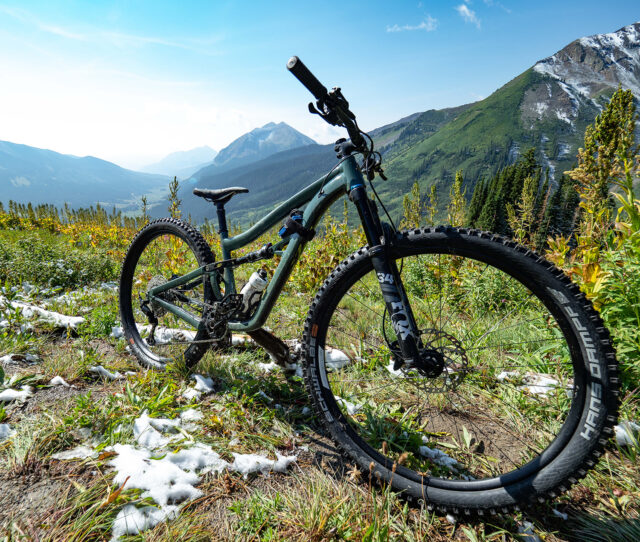
Intro
At the beginning of 2021, Ibis released the Ripley AF — as in, Aluminum Frame — which is the second model in their lineup to which they’ve given that treatment, after the longer-travel Ripmo AF. The Ripmo AF was more than just an aluminum Ripmo, though, and the Ripley AF has some additional tweaks compared to its carbon counterpart as well. So what has Ibis created with the Ripley AF?
Three of us spent a lot of time on the Ripley AF all around the Gunnison / Crested Butte valley, and we’ve now added our full review. If you just want to hear about the highlights, check out our “Long-Term / Short-Form” video below. For all the details, keep reading.
The Frame
Ibis says that “The Ripley AF is our beloved, category-defying, short-travel, singletrack-scorching Ripley — rendered in aluminum, with more aggressive geometry. All the sizzle and pop of the carbon Ripley, now available as a complete bike at a wallet friendly, sub $3000.”
[Editor’s Note: After the initial release, Ibis did bump up the price of the base-level Ripley AF Deore build, which we’ve been testing, to $3,199. Still, though, it’s a pretty modest price by today’s standards.]
The Ripley AF keeps the carbon Ripley’s 29” wheels and 130 mm front / 120 mm rear wheel travel, but lops a degree off the headtube angle (to 65.5°, from 66.5°). The geometry is otherwise unchanged, apart from the impact of that slacker headtube angle on the wheelbase, which grew by 10 mm, from 1178 to 1188 mm on the size Medium.
Apart from the expected increase in weight and decrease in cost (a carbon Ripley frame with a Fox DPS Performance shock costs $1,300 more), the Ripley AF doesn’t stray too far from the standard Ripley. (Ibis lists the Ripley AF frame at 7.45 lb / 3.38 kg with a shock, and the carbon Ripley at 5.0 lb / 2.3 kg without; the Fox Float DPS shock spec’d on both weights roughly 0.49 lb / 0.22 kg, so call it a ~1.96 lb / 0.89 kg difference between the two.) Both iterations of the Ripley feature DW-Link suspension in a very similar layout and with most of the same features, including removable ISCG-05 tabs for a chainguide, a threaded bottom bracket shell, and internal cable routing throughout.
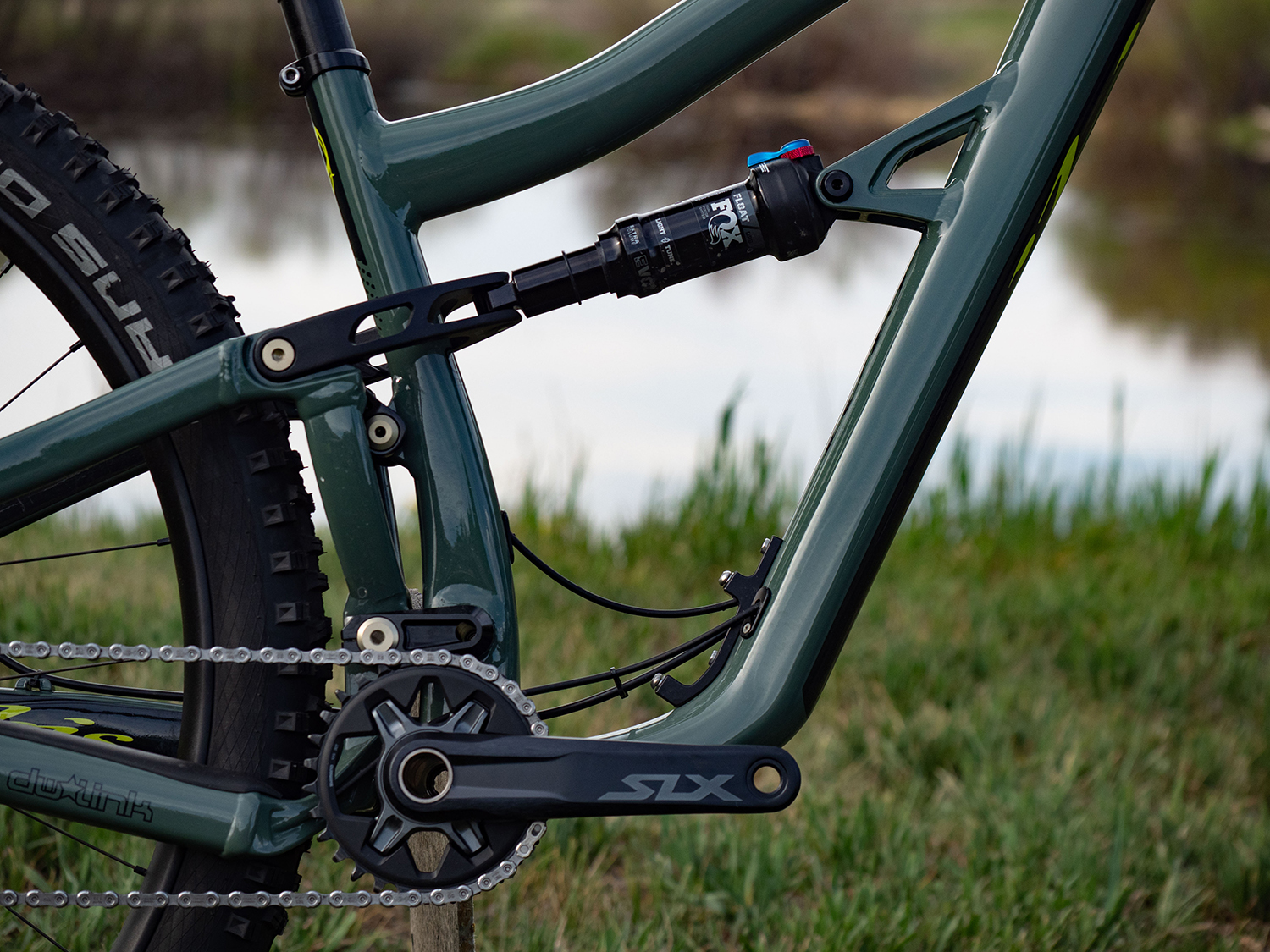
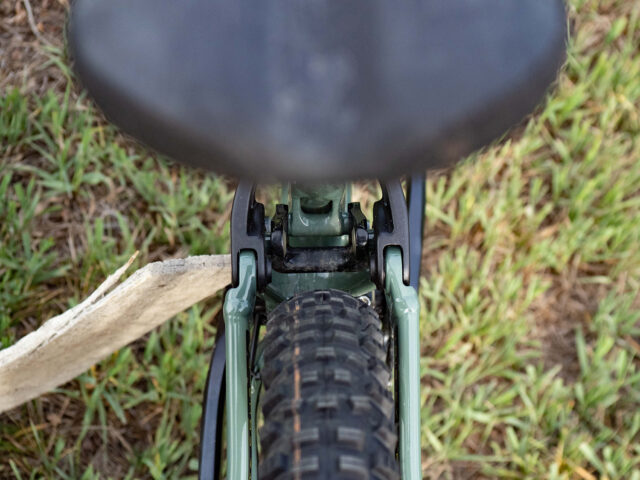
Again in keeping with the standard Ripley, the Ripmo AF comes in four sizes, Small through Extra Large, and Ibis offers a seven-year warranty on the frame. Tire clearance up to 2.6” wide is on offer (and we can confirm that clearance), and a water bottle fits inside the front triangle on all four sizes.
The Builds
Ibis is currently offering three builds for the Ripley AF — a Shimano Deore option for $3,199, a SRAM “NGX” (i.e., a mix of SRAM NX and GX) spec for $3,499, and a Shimano SLX build for just over four grand at $4,099. All come with a Fox 34 Performance fork and Fox Float DPS Performance rear shock, Ibis’s house-brand S35 Aluminum wheels, and the Deore and NGX builds get a KS Rage-i dropper post (125 mm travel on Small frames, 150 mm on Mediums, and 170 mm on the Large and XL sizes). The SLX build gets you a higher-end Bike Yoke Revive dropper (125 mm travel on S, 160 mm on M, and 185 mm on L & XL).
The Deore build gets the full suite of Shimano Deore drivetrain and brake components, including the M6100 2-piston brakes with 180 mm rotors at both ends, while the NGX build features SRAM NX cranks, shifter, and chain, with a GX cassette and rear derailleur that’s paired with SRAM 2-piston brakes. The SLX build gets you full SLX components for the drivetrain and brakes.
Those are all solid builds for the money, and the overall price range is far more on the budget-friendly side of the spectrum than most of Ibis’s carbon models. For reference, the carbon Ripley’s frame + shock goes for the same price as the Ripley AF Deore full build, and the carbon Ripley’s full build options range from $5,099 to $11,499.
Fit and Geometry
As one would expect for a relatively short-travel bike, the Ripmo AF’s geometry isn’t wildly aggressive, but it’s clearly aimed at being a very capable Trail bike, as opposed to anything akin to a Cross Country race bike. All four sizes get a 76° effective seat tube angle, moderately short 432 mm chainstays, and a 65.5° headtube angle. Reach ranges from 425 mm on the Small through 500 mm for the XL, in 25 mm increments. All that adds up to wheelbases between 1157 mm for the Small, through 1246 mm on the XL. The bottom bracket height comes in at 335 mm across the size range.
Those numbers aren’t too far off from the Guerrilla Gravity Trail Pistol, another 120 / 130 mm travel Trail bike that we found to punch well above its travel class in terms of downhill capability, while climbing more efficiently than most longer-travel, Enduro oriented bikes. The Ripley AF’s geometry is also very similar to the Pivot Trail 429 we reviewed earlier this summer, though the two sit on very opposite ends of the price spectrum.
For reference, here’s the whole geometry chart for the Ripley AF:
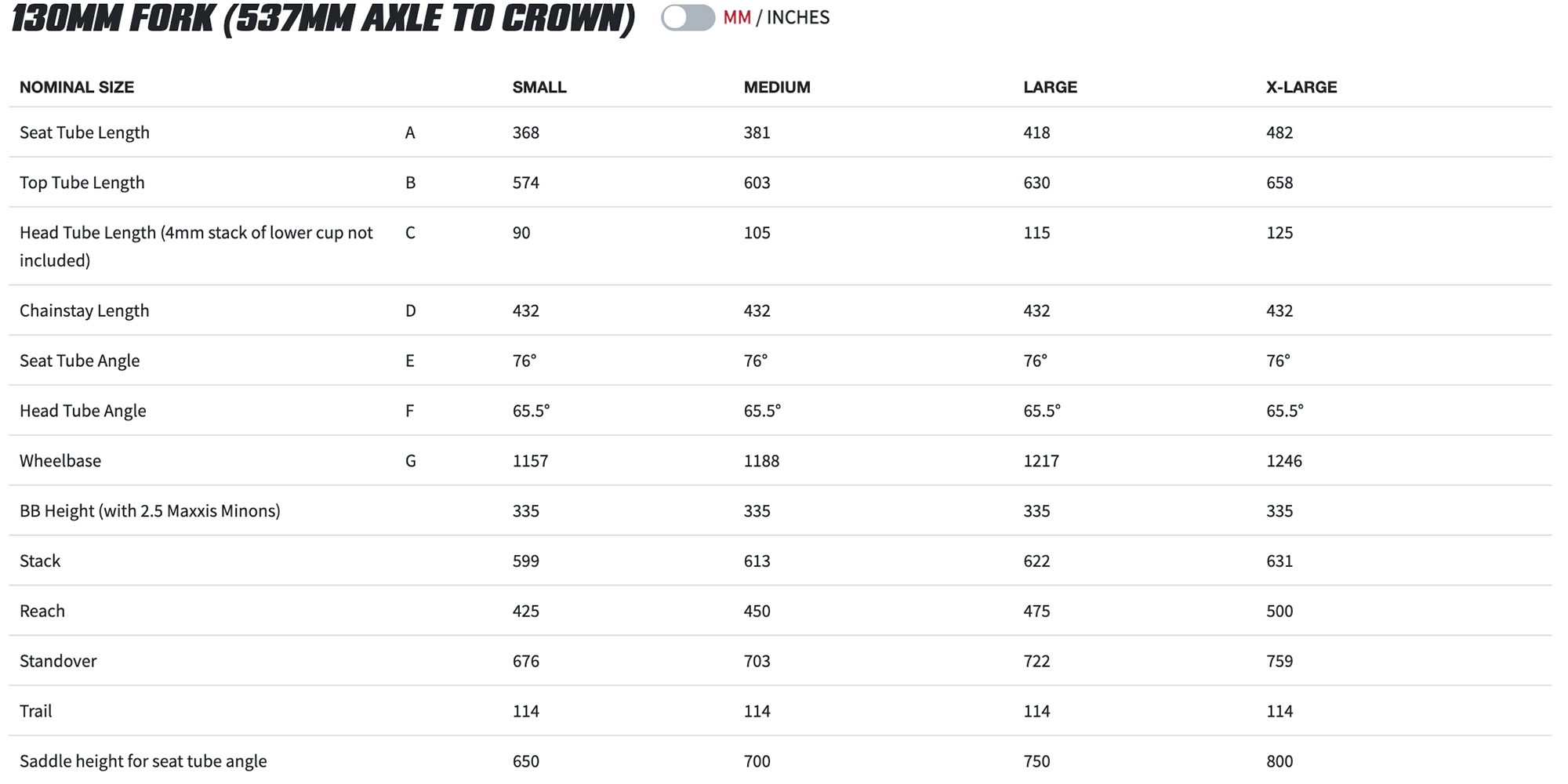
Some Preemptive Questions / Things We Were Curious About
(1) The Ripley AF looks to be a relatively aggressive 120mm-travel Trail bike, in the realm of the Pivot Trail 429 and Banshee Phantom V3. How do these all stack up, and how does the Ripley AF fit into the rest of the class of bikes in that sort of travel range?
(2) What sort of riders are going to be best served by a bike like the Ripley AF, as opposed to either a more XC-oriented bike in a similar travel range, or a Trail bike with a bit more travel?
(3) After releasing the Ripmo AF, Ibis followed it up by updating the carbon Ripmo with most of the same geometry tweaks that went into the Ripmo AF. Is a new carbon Ripley on the way as well, or is Ibis going to keep the two models a bit more distinct?
Flash Review
Blister Members can read our Flash Review of the Ripley AF for our initial on-trail impressions. Become a Blister member now to check out this and all of our Flash Reviews, plus get exclusive deals and discounts on gear, and personalized gear recommendations from us.
FULL REVIEW
Thoughts on Fit & Geometry
Eric Freson (5’10”, 165 lbs / 178 cm, 74.8 kg): The geometry of the Ripley AF helps create a ride that I’d describe as engaged, easy, and responsive. But the AF version, with its headtube angle slackened a full degree compared to the carbon Ripley, feels surprisingly stable and composed when you get it up to speed on fast sections of trail. The slacker headtube and slightly longer wheelbase provide an impressive change in my amount of confidence at speed over the previous version of the carbon Ripley, without detracting noticeably from the bike’s handling or performance on mellower trails. In my eyes, the slacker HTA is an improvement in the bike’s geo, for sure. But the Ripley AF is still a short-travel Trail bike, and does not have the geo to encourage plowing through rough sections of trail with abandon. You still need to place your wheels deliberately and look further ahead when encountering multiple rough holes or heavy sections of compression, or else the bike will get overwhelmed.
I think the Ripley AF’s slightly more compact feel (in the size Medium we’ve been testing), compared to many long-travel Enduro bikes (and even some other Trail bikes), makes it a great fit for the average speeds, tighter trails, and more playful-oriented scenarios you are likely to experience on typical trail rides on an actual “Trail” bike. For someone who has grown accustomed to moving around a lot on a long bike, though, you may find less space here than you’re used to.
Speaking of fit, if I were to buy a Ripley AF for my personal use, I probably would have gone for the Large frame (which is what Ibis’s size chart recommends), primarily for its longer reach. Many of the bikes I spend time with these days are a bit more stretched out, and the Medium Ripley AF could at times feel a bit compact, especially when climbing, where I sometimes felt like I could be too far over the bars / the front end of the bike.
Luke Koppa (5’8”, 155 lbs / 173 cm, 70 kg): As someone who’s more solidly in Ibis’s recommended height range for a size Medium, the Medium Ripley AF felt comfortable and easy to get along with.
The 450 mm reach is very normal for a bike in this category these days, and while it’s not as spacious as some of the more aggressive Trail bikes out there (e.g., Commencal Meta TR), I rarely felt like I was getting pitched too far forward or like I didn’t have enough room to move around.
The Ripley AF’s 76° effective seat tube angle also felt like a great fit for the bike — steep enough that I didn’t have any significant issues keeping the front wheel planted on steep climbs, but not so steep that it felt awkward on flatter and more rolling climbs. For a bike in this class, I think it’s great — rather than just being used to pedal up sharp ascents to reach descents that point straight downhill, something like the Ripley AF should also be fun on trails in the middle of the spectrum. And I think its geometry works very well for that sort of terrain.
I also like what Ibis have done with the head angle — the AF is probably not as sharp and precise handling as the carbon version (which has nearly identical geo, apart from a 1° steeper head tube angle), but I think the AF strikes a nice balance. It still feels quicker to turn and more engaging on mellow terrain than many slightly longer-travel machines, but not to the point that it gets scary for me when things do get a bit steeper and more technical.
All in all, I think Ibis did a really good job with the Ripley AF’s geometry. It hits a nice, versatile middle ground between more uphill-oriented XC rigs and more downhill-oriented Trail bikes.
Dylan Wood (5’11”, 155 lbs / 180 cm, 70 kg): Like Eric, I am a bit outside the Ripley AF’s recommended sizing for a Medium frame; that being said, I mostly got along with the geometry and fit on the Medium Ripley AF. Being a size down from what I typically ride, the Medium Ripley AF felt super playful, easy to throw around, and quick when maneuvering around tight corners. A 450 mm reach isn’t actually all that much smaller than the bikes I was riding just 4-5 years ago, so I didn’t feel all that cramped when standing up and riding the bike downhill. However, when standing and climbing up steep sections of trail, the bars did feel quite close to my knees, though it was never much of an issue.
The 65.5º head tube angle made for pretty stable handling at higher speeds, and with a somewhat shorter front end, I was able to keep the front wheel weighted and tracking well when climbing. I also really got along with the 76º seat tube angle — on flatter climbs, I was in a comfortable climbing position and able to put solid energy into the pedals. When the trail got steeper, I did find myself sliding forward on the saddle or standing up and pedaling, but for trail riding on the more XC-side of the spectrum, these occurrences were rare and I found myself most often seated comfortably, cranking the watts away.
Being taller than intended for this bike and with long legs (I have a 77 cm seat height, measured from center of BB to the center of the top of the saddle), I did have the 150 mm dropper post sticking out a ridiculous amount from the frame. Like, probably six inches / ~15 cm. A longer dropper would definitely be welcome for me, but if you are 5’11” with relatively short legs and prefer a snappy, playful ride, I could see how you might want to consider a Medium Ripley AF over the Large.
[Luke: I’m shorter than Dylan and Eric and also had a notable amount of post sticking out of the frame, so it would be cool to see a longer-travel post spec’d on the Medium.]
Ride Impressions — Climbing
Eric: The Ripley AF is an efficient climber, and its seat tube angle, chainstay, seat stay, and wheelbase numbers are all somewhere in the realm of “average” for a bike in this category. Put this together and it means it’s easy to feel at home on the Ripley AF. Using the middle “trail” setting on the shock’s compression lever doesn’t often feel necessary, even in fast, rolling terrain, and I only found myself reaching for the firmest “climb” setting on longer out-of-the-saddle attacks or sustained smooth-surface climbing.
I generally found the Ripley AF’s 120 mm of suspension to skew more to the “supportive” than “sensitive” side of the spectrum. So for riders looking to feel like they are putting down watts very efficiently, there’s a lot to like here.
As we just noted, we’ve been riding the Ripley AF in a Medium — smaller than I might normally choose — and this has put my weight and body position a bit farther forward of bike center than I normally find myself on bigger bikes. This does mean I have needed to pay a bit more attention to keeping rear-wheel traction while climbing steep or loose surfaces since it’s easy to get weight forward over the front wheel, but I think this is a function of frame size, not design.
The tires spec’d on our Ripley AF did have a noticeable impact on the bike’s climbing character. Far more than the actual weight of the bike itself. The large and sticky 2.6’’ Schwalbe Hans Dampf tires on our test bike really impact the wheel spin-up of the bike. They’re slower rolling and a bit heavier than you might expect to find on a bike in this category, but the flip-side is that they do an excellent job of providing grip and damping. Our bike is a pre-production spec, and production models come with a 2.4’’ Maxxis Dissector rear / DHR II front combo, which would go a long way in livening things back up. The big Schwalbe rubber plays a role in helping the bike to feel bigger and more capable while descending, at the expense of some efficiency and snappiness when climbing.
Luke: Despite not having any carbon fiber bits on it, the fastest-rolling tires out there, nor any extra levers on the bars that turn it into a rigid bike, the Ibis Ripley AF was one of the bikes I’ve most enjoyed pedalling this summer.
At a little over 32 lbs for our size Medium, the Ripley AF is definitely not the lightest ~120mm-travel bike out there. And yet, it still feels quite efficient on the ups.
I think a lot of that comes down to its DW-Link suspension design. This isn’t saying anything new, but DW-Link tends to create a firm pedalling platform and it feels like a good match with the Ripley AF’s shorter-travel Trail bike design. The Ripley AF doesn’t feel as quick on the pedals as the far more expensive and 4+ lb lighter Pivot Trail 429 we tested, but in terms of suspension efficiency, these two 120mm-travel DW-Link bikes are pretty dang similar. And compared to the 115mm-travel Banshee Phantom V3 we had last year (which came in at almost the same exact weight), I’d say the Ripley AF felt a bit quicker on the uphill.
Now, if you’re looking for a bike in this category that is going to feel as light, quick, and efficient as possible, there are loads of better options. And most (maybe all?) are going to cost a significant amount more than the Ripley AF. But if you’re like me, the Ripley AF still makes for a significantly more enjoyable experience going uphill compared to the other bikes I frequently ride. For reference, my current bike is a Commencal Meta TR. That bike is actually a pretty efficient pedaller in terms of not wallowing much when you push on the cranks, but it weighs 36+ lbs and has far more downhill-oriented geometry. Beyond just feeling lighter and more efficient under pedalling forces than that bike, the Ripley AF’s geometry and build spec all add up to a very real improvement in overall uphill performance — as well as fun on more rolling, up-and-down zones.
As for traction and rear-forward balance, I didn’t notice anything weird with the size Medium Ripley AF, so I think Eric’s right in that his experience was a size issue. Despite its solid pedalling efficiency, the Ripley AF still managed to make it pretty easy to maintain traction on steeper and looser sections of trails. I ended up leaving the Ripley AF’s shock in the open position for almost the entirety of my time on it, apart from paved roads. This was mostly due to the suspension’s efficiency, as well as my lack of interest in feeling every braking bump and rock on the gravel roads around Crested Butte.
So again, I think Ibis did a very solid job of making the Ripley AF stand out from longer-travel bikes when the trails point uphill (or up then down then up then down then up…), without making it a bike that’s only fun in those scenarios.
Dylan: Yep, not much to add here. The Ripley AF feels efficient on the uphill without sacrificing too much in the realm of traction. Speaking of traction, the 2.6” Schwalbe Hans Dampf tires had plenty of it on the way up, at the expense of some rolling speed and rotational weight. As far as my take on the front-rear balance goes, I did not have any rear-tire traction issues when seated and climbing moderately steep trails. Once the trail got very steep on the uphill, the rear tire did skid out on me a little bit. But this wasn’t very out of the ordinary for a bike this size, and I think Eric and Luke are correct that it is simply a sizing thing.
Ride Impressions — Descending
Eric: I found I enjoyed the Ripley AF best when running around 28% sag. In this ballpark, the Ripley AF provided decent small-bump sensitivity, good power transmission, and I wasn’t bottoming it out incessantly.
Overall, descending on the Ripley AF is a hoot. The bike deals well with small trail noise and chatter when up to speed, and the rear end of the bike has a somewhat decoupled / floaty feel to it that leaves you using less of your body’s natural suspension to absorb energy and keep things on-line during chattery sections of trail. This has been a major bonus on larger rides, where the simple act of riding your bike for 4-6 hours can leave you feeling tired and drained. This may be a result of Ibis’s “Traction” tune, the bike’s leverage curve and DW-Link doing a good job of handling negative travel events / impacts, or likely a mix of the two.
Some of the Ripley AF’s current ability to absorb trail noise and chatter, as well as its ample amount of traction, do certainly come from the Schwalbe rubber on our test bike. It helps the bike feel bigger and more capable while descending, at the expense of some efficiency and snappy-ness when climbing. I would expect the production model’s 2.4’’ Maxxis Dissector / DHR II combo to feel a bit sharper than the Schwalbe 2.6’s, and this would help to ramp up the fun / jib factor of the Ripley AF.
I found descending on the Ripley AF to be more in keeping with the “classic” character of a Trail bike, rather than the super shredder jib bike that Ibis seems to be framing it as in their marketing. This is in no way to say that it isn’t engaged, easy, and responsive when pointed downhill, but I didn’t find this to be a bike asking me to boost it to the moon, bonk, or manual everything in sight. I had a ton of fun riding the Ripley AF, and I frankly like its predictable handling (it makes it easy to focus on what’s coming in the trail, rather than how the bike’s reacting to it). But the Ripley AF didn’t strike me as some sort of short-travel park bike.
If I owned the Ripley AF, I’d buy the Large, which would come with a “Standard” Traction tune, rather than the “Light” tune of Medium frame. This would be appreciated on larger / faster / repeated heavy compression cycles, where the Medium Ripley AF’s shock can currently begin to pretty quickly feel overwhelmed during successive large impacts. This is an area where the Ripley AF didn’t feel like it “punched above its weight” in regard to suspension travel or an ability to ride like a bigger bike. It slots very nicely into its intended usage niche.
Luke: I also ran about the same percentage of sag as Eric and agree with all that he’s said. Especially given how firm it feels on the pedals, I was really impressed by the small-bump compliance of the Ripley AF, which is what I’d prioritize in a bike in this class (rather than how it deals with more “medium-size” and “big” hits).
I also liked how, when I wanted to build speed on the terrain and further delay the next time I had to actually put in a pedal stroke, the Ripley AF felt pretty supportive. Pumping and pushing into the bike is easy and rewarding, and probably aided by the fairly short 432 mm chainstays that make it pretty easy to get over the rear axle.
Like Eric, I’d agree that the Ripley AF doesn’t immediately stand out as a shorter-travel bike that feels like a longer-travel one. It feels like a 120mm-travel bike, with both the upsides and downsides. Compared to the Ripley AF, there are definitely other bikes in this travel class that I’d be less keen to really push on faster, steeper, and / or chunkier sections of trail. And there are also others like the Banshee Phantom V3 that feel more inclined to seek out that sort of terrain. The Ripley AF slots somewhere in the middle, which is an area that I think a whole bunch of people will like.
I appreciated the Ripley AF the most on trails that don’t have really long, continuous sections of high-speed chunk or really steep zones. Taking it down trails like Crested Butte’s Green Lake or Doctor Park left me wanting a bit more travel and a longer bike, but I definitely preferred it over my Meta TR on smoother, more rolling trails like 401, Lupine, and Strand Hill. It feels calm and composed enough to handle the occasional rock garden or rooty straightaway (better, I think, than many of the more XC-oriented bikes in this class), while still making mellower terrain more interesting than longer, slacker, longer-travel rigs.
Dylan: I agree with what both Luke and Eric stated above: the Ripley AF handles small bumps and trail chatter very well, descends like a 120 mm Trail bike should, but by all means isn’t a bike designed to handle like an Enduro sled.
Riding the Medium, I found myself wanting to take advantage of the nimble, playful ride the Ripley AF offered. The 432 mm chainstays made it easy to get the bike in the air and flick around corners, and the shorter wheelbase (than what I usually ride) made it easy to maneuver around technical, tight trails. This bike can definitely handle gnarlier trails like the ones Luke mentioned above, but felt most at home on smoother, more XC-esque trails.
Thoughts on the Build
Eric: I got along really well with the Ripley AF’s Deore build we’ve been testing. Far better than I expected to, in fact. The components of the build worked well — and most importantly with a more budget-oriented build like this — they don’t really stick out in my mind due to some glaring limitations or shortcomings.
The Deore drivetrain and Ibis S35 wheelset have been the standout components for me, with both performing at a far higher level than their price tags might suggest. The Deore drivetrain offered pretty quick, crisp, and precise shifting throughout the test. The Ibis S35 wheels, while not having as quick of engagement as those with pricier hub options, didn’t feel heavy or overly compliant, held tension, and stayed true throughout my time with them.
The biggest limitation on the Ripley AF is the fork — as I’ve written in other reviews, I’m still not a fan of Fox’s Performance Series GRIP damper. At higher speeds and during bigger impacts, I just don’t find there to be enough high-speed compression and rebound damping. The Ripley AF’s Fox 34 Performance has seen fewer of these types of impacts than the Fox 36 Performance forks I have ridden on longer-travel bikes, so these limitations are less noticeable, but still present. A damper upgrade is the one that I would seriously consider spending more money on if I were to bring a Ripley AF home with me.
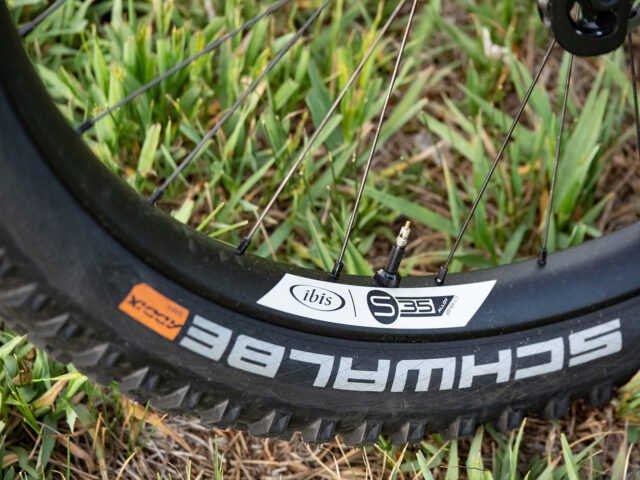
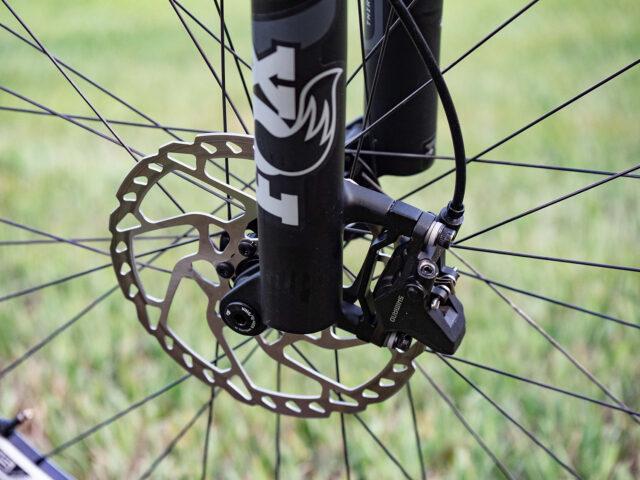
Otherwise, the build has performed admirably, and I haven’t felt like I have been left really wanting by any of the component choices on the build. It’s great when you don’t need to immediately begin shopping for deals on components to swap out on your new bike. Especially for a full bike that costs a modest (by today’s standards) $3,199.
Luke: Yep, I’ve been super psyched on the Ripley AF Deore from a price-to-performance perspective.
The Deore drivetrain was the clear standout for me — it shifts really well under load (just like the pricier Shimano offerings) and I had zero issues with it during my time with the bike. The Deore 2-piston brakes also worked quite well, and I was only left wanting more power on the longest descents I did on the bike. I’m sure I’d prefer a 4-piston version, but for this sort of bike, I really didn’t mind the 2-piston variant.
I thought the Fox DPS Performance shock … performed … quite well, and I agree with Eric in that the Performance-level 34 fork is probably one of the components I’d potentially look to upgrade. To me, the front end of the Ripley AF couldn’t quite match the suppleness and support of the rear end, but it wasn’t a serious fault (especially considering the overall price). But I would be curious to try this bike with Fox’s latest GRIP2-damper-equipped 34, or a RockShox Pike Ultimate.
The KS Rage-i dropper did its job just fine, though it does take more force to compress than most droppers I’ve used, and the ergonomics of the lever weren’t as smooth and comfortable as you’d find on more expensive options. It still goes up and down like you want, it’s just generally a bit less refined than the pricier alternatives.
One unexpected highlight was the Lizard Skin Charger grips — I liked how thick and plush they were, and I think they helped make the bike just a bit more comfortable on longer days.
Overall, for the least-expensive build of a brand’s least-expensive model, I was really, really impressed by the performance of the Ripley AF Deore. And during my brief time on the $8,849 Pivot Trail 429 we reviewed, the price and component differences were the main things I noticed on the two bikes. Both pedal very well and feature similar geometry that makes them feel equally capable in most of the same terrain. The pricier and 4+ lb lighter Trail 429 mostly just feels lighter and more sprightly on the pedals due to its lack of weight, faster-rolling tires, and carbon wheels. Whether that makes it worth spending the extra dough over the Ripley AF will be a matter of personal preference and bank account.
Dylan: Yep, the bang-for-the-buck value this bike offers should almost be embarrassing to other high-priced “downcountry” bikes. Shimano is really killing it with their budget-oriented drivetrain options, and the Deore we used on this bike was smooth, consistent, and reliable. The Deore 2-piston brakes also had the sharp Shimano feel that I come to expect after having spent lots of time on their other brake offerings, and I had no issues with stopping power nor modulation with these budget-oriented brakes.
The Fox Performance suspension on this bike gets the job done, and leaves me with little to complain about. However, if you like to finely tune your suspension and are more sensitive to the way compression and rebound damping affects your ride, I could see how a suspension upgrade could be the most valuable investment in this bike.
The Schwalbe Hans Dampf tires that came on our bike made up a good bit of this bike’s personality for me, and I thought they made the bike feel a little more confidence-inspiring to rip down loose, sandy descents. However, I think the Maxxis Dissector / DHR II combo makes more sense for this bike and should improve the rolling speed and climbing efficiency over the Schwalbes. Though, it is good to know that you have the option to run a big tire like the Hans Dampf if you want a little more traction and plushness over the Dissector / DHR II.
Who’s It For?
There are a lot of people who could get along well with the Ripley AF, though a few particular types stand out to us:
(1) Riders who are looking for one bike to use for everything, who aren’t always seeking out really rough and steep descents, and who are on a tighter budget
Due to its price, travel, and generally versatile nature, the Ripley AF is great for these people. As long as you’re not primarily aiming to spend a bunch of time on very steep, chunky, and loose trails, the Ripley AF can be a ton of fun on the majority of trails. And its price-to-performance ratio is excellent. Especially if you want to do some longer days and make the most of rolling trails without being terrified when you encounter the occasional steep / rough section of trail, the Ripley AF makes for a really appealing 1-bike quiver that doesn’t cost a fortune.
(2) Riders who already have a longer-travel Trail / Enduro bike and who are looking to add something that makes longer days and more mellow trails more enjoyable.
Do you already have a longer bike with lots of squish that you use for the more challenging trails around you? Do you also spend enough time on mellower trails that you’re looking to add a bike that makes those trails significantly more fun than on your current bike? Are you not looking to spend a boatload of cash on this new bike? If so, the Ripley AF makes a lot of sense.
While it’s not the lightest bike in its class, the Ripley AF’s efficient pedalling platform and moderate geometry make it significantly better on the uphills and up-and-down terrain than a lot of modern Trail / Enduro bikes. At the same time, it’s not so uphill-oriented that it feels weird, short, steep, and sketchy when coming from those sorts of more downhill-oriented bikes. And it does that without draining your bike account as much as many of the lighter bikes in this class.
Bottom Line
Eric: In my opinion, the Ibis Ripley AF is a very classic “all-rounder” bike. Excellent at covering ground, logging miles, and making memories. The slackening of the head tube angle is an improvement from older iterations of the Ripley and helps add to the AF’s versatility. The aluminum frame, less expensive build options, and additional weight were not things that stood out to me in my time riding the Ripley AF, which is a good thing. What did was the “smiles per dollar” metric. The Ripley AF has had me rethinking just how much bike I really “need” from a cost perspective, and what I might spend the savings on instead. What’s necessary to have a good time? It’s something I wasn’t expecting to be thinking about, and definitely a consideration anyone who would classify themselves as a more casual rider should really consider.
Something to also note is that many individuals buying in this price range may identify as newer or less experienced riders. For those folks, the Ripley AF is an excellent doorway into exploring mountain bikes. It isn’t likely to let you down during your ownership tenure, can do just about anything you’d ask it to, and by the time you are ready to move on to something else, you will have a better idea of your personal preferences.
Luke: Yep. The Ripley AF does most things quite well and manages to do that at a not-outrageous price point. Those who know they want something near the ends of the spectrum — in terms of maximum performance in gnarly terrain or maximum efficiency for long and fast-paced ascents — should look elsewhere. But if you’re looking for a bike that’s pretty efficient on the up, predictable on most descents, and that’s generally gonna let you have a good time most days on most trails, the Ripley AF offers a whole lot to like — even before you compare its price tag to the competition.
Dylan: What they said!

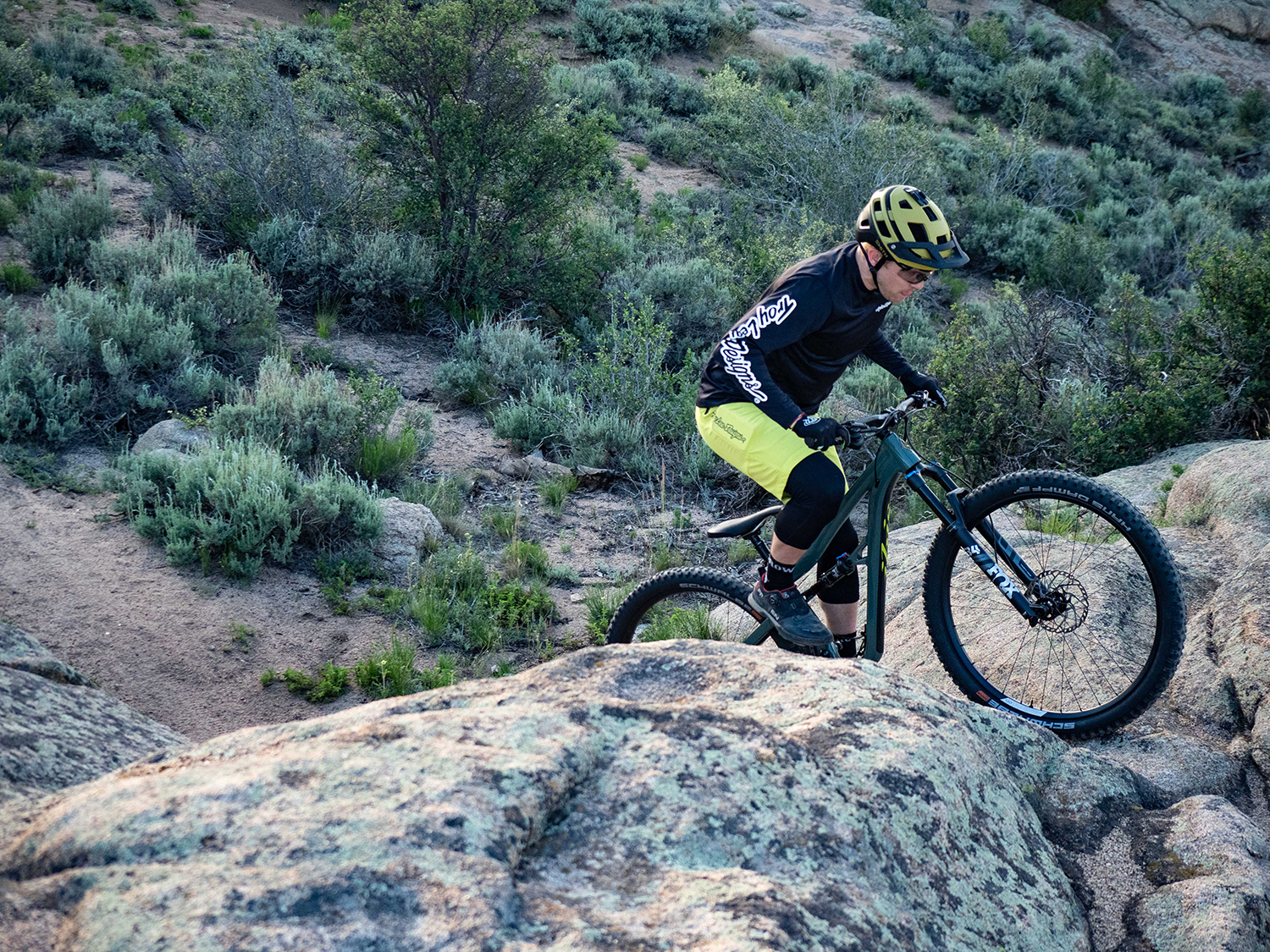
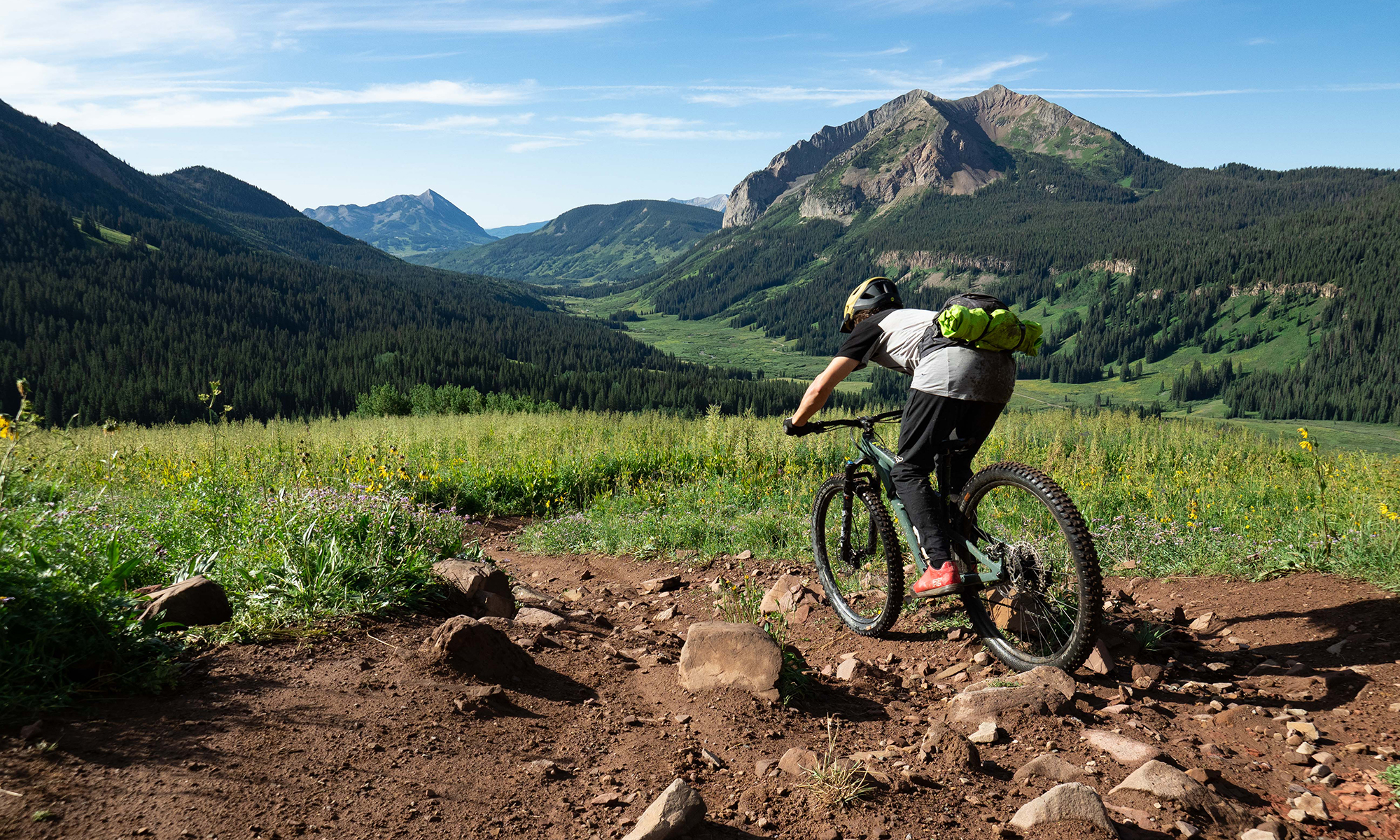
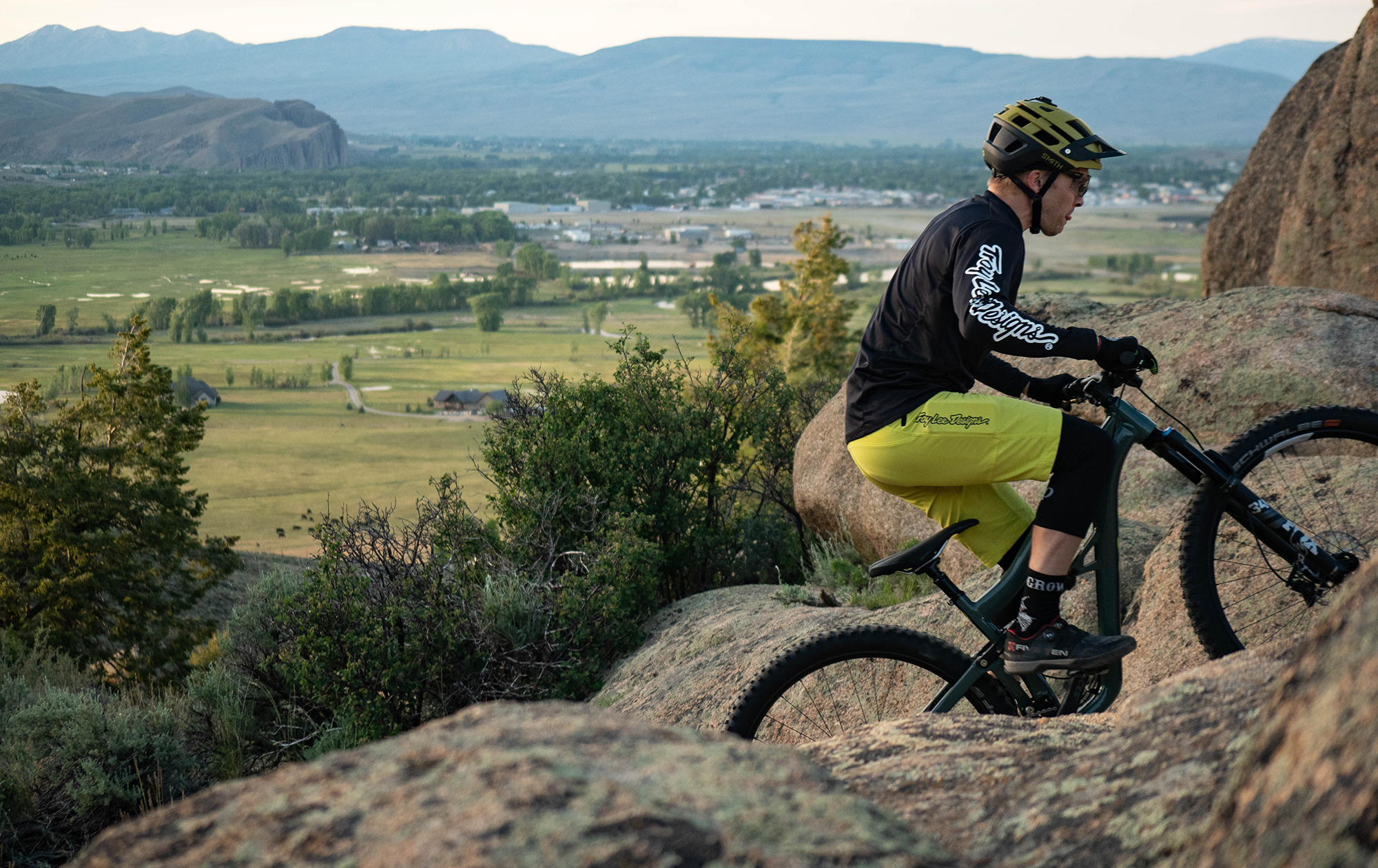
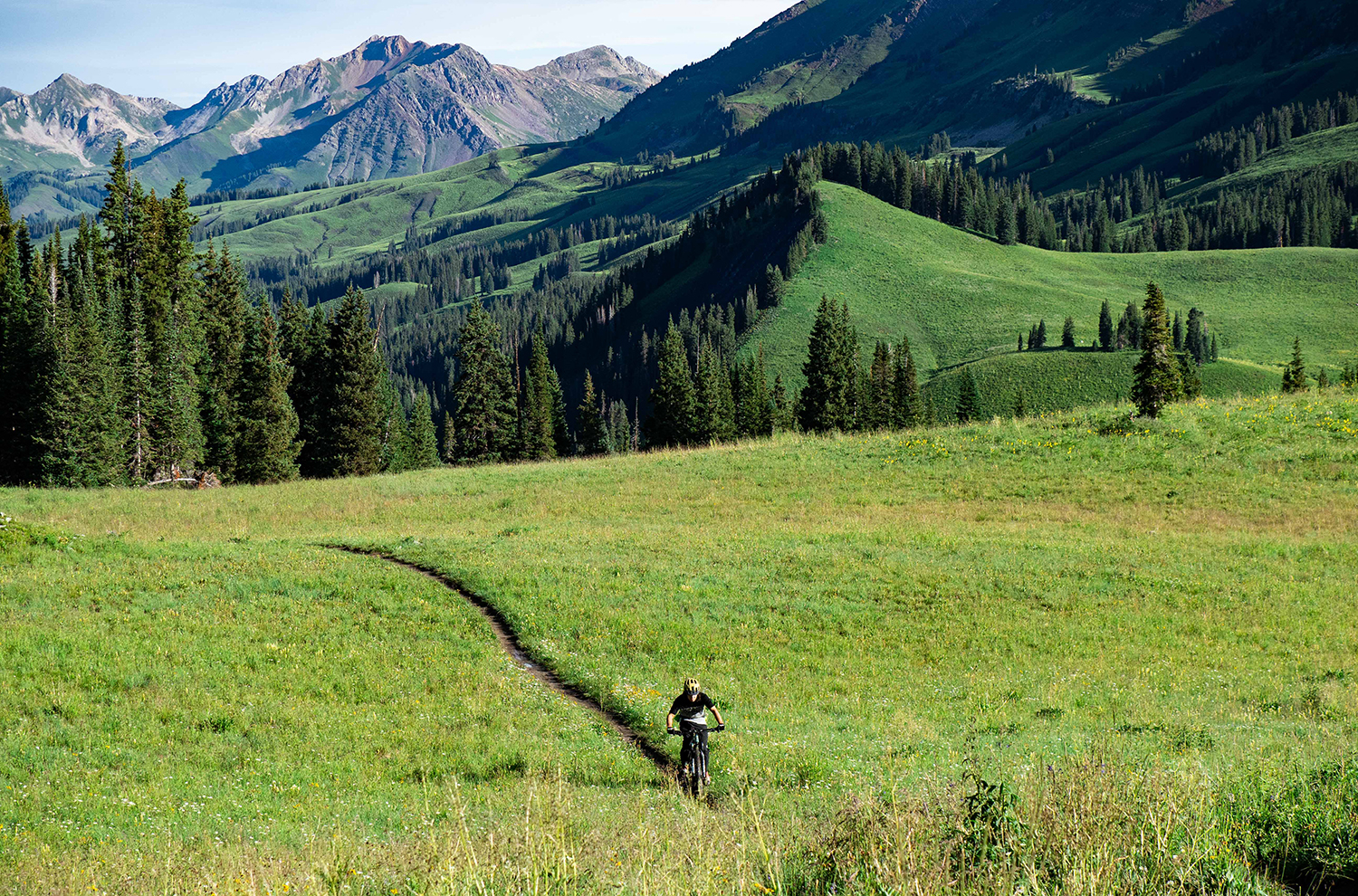
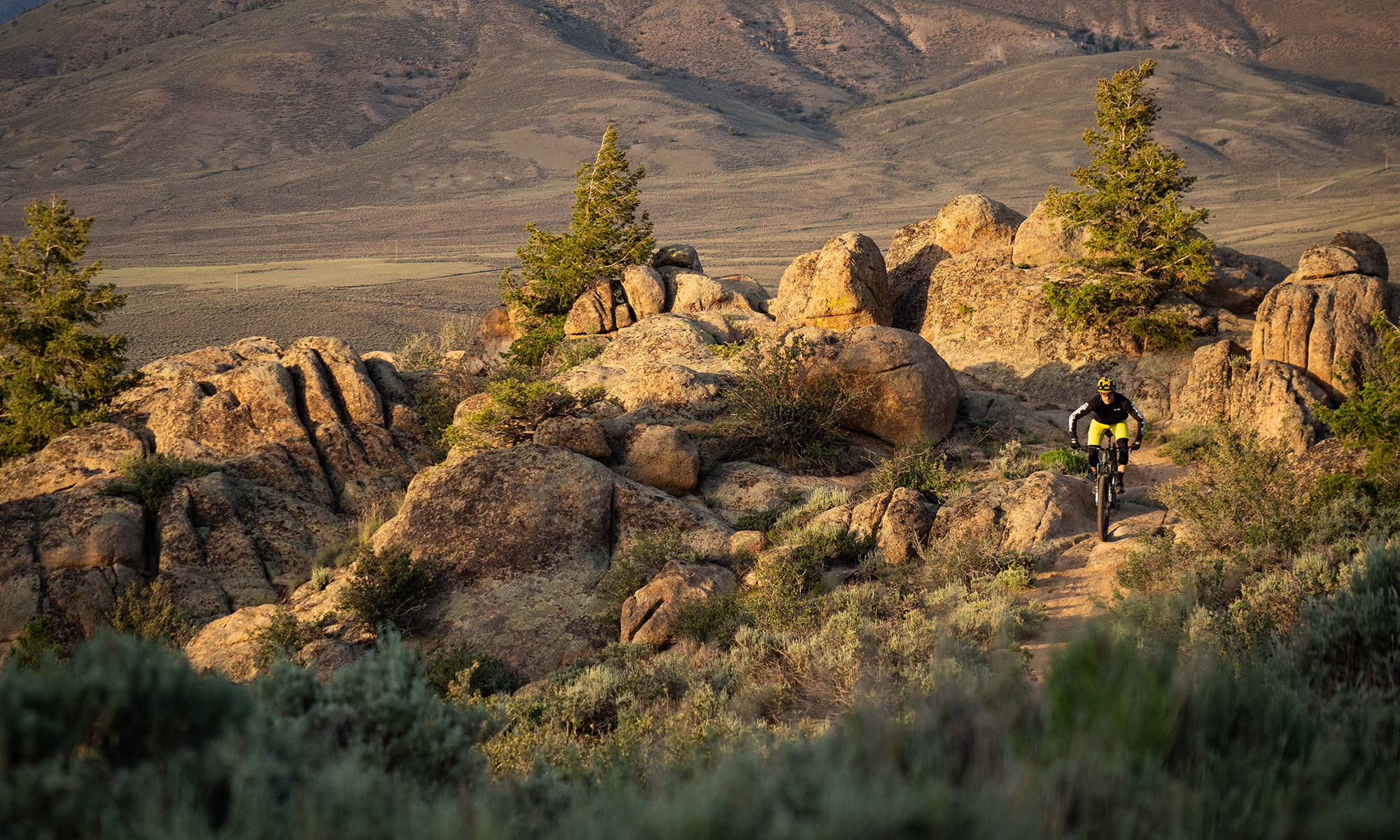
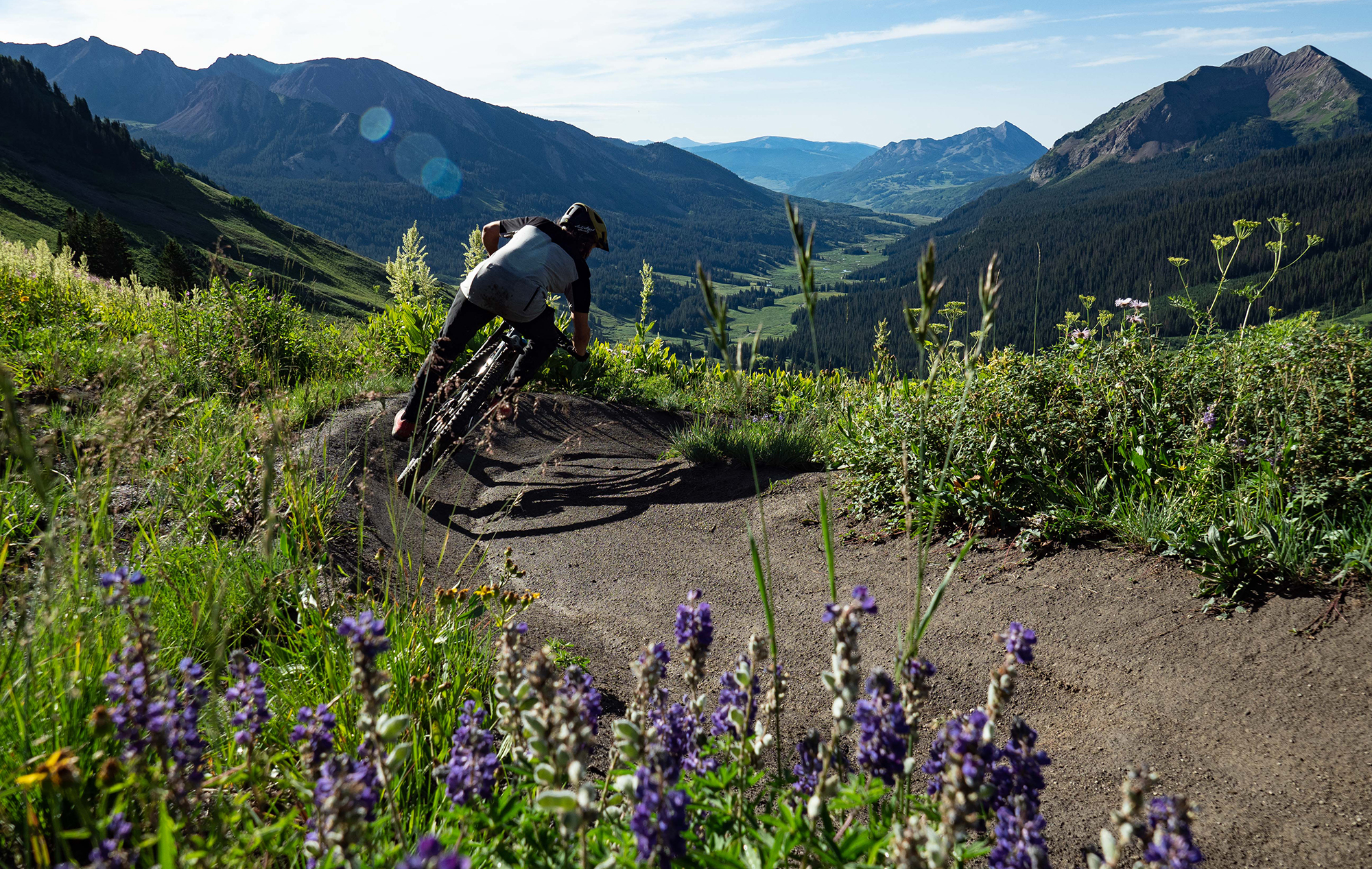
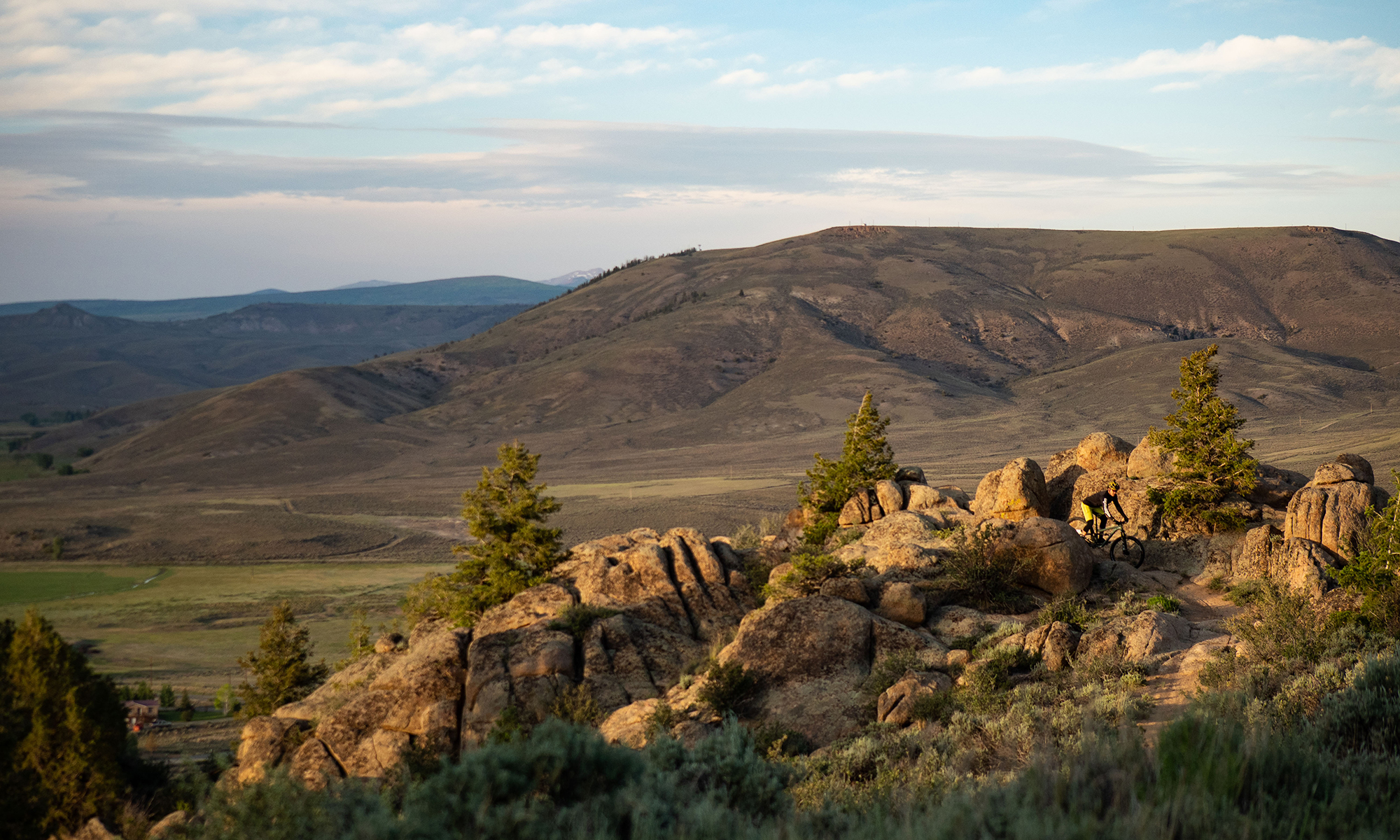
I tried to love the Banshee Phantom V3 last spring and for the trails where I’m at the geometry let me outride the fairly linear suspension easily. With heavy tires, big fork (150mm lyric), and big brakes it just made more sense to ride my Ripmo AF.
I’m hoping the Ripley AF has a similarly delicious progressive suspension curve to keep up with those sweet angles.
Hi, enjoyed your review! For a beginner – not absolute beginner but it’s been a while – living in the front range of colorado, would you recommend the Ripley AF or GG Trail Pistol? I’m also considering the Yeti Arc, but no need to comment on that unless you feel compelled ;) thanks!
You guys do such an awesome job on all the reviews, including the podcast! Keep it up.
One request…it is great that you include the reviewers height/weight as it makes a big difference, especially in bikes. And no offense intended, but it would be great if there was a review with someone above 6″ feet, and maybe 200lbs or more.
And if you are looking, I am available!!!
Thanks for al you guys do.
Well done! This is an incredibly comprehensive review, and from 3 different perspectives at that! I looked into a lot of reviews for the Ripley AF before finally ordering and owning one now. I settled on the lower price, Ibis’ version of DW-Link, and the fact that it can hang with a lot of higher end bikes – although probably in the back, but itll be there! The AF frame and shock weighs 1.5 – 2 lbs more than the carbon. Not bad. And if one did a direct swap of all components from an AF Deore build to a Ripley V4 carbon frame, the carbon frame and components would also be closer to 30+lbs anyways! Yea the AF is a bit chubby, but unless someone buys used I’ve yet to find something that has as much value. Maybe only a 2021 Specialized Epic Evo Comp, but that’s a little more XC (or “down country”) focused and costs about $1k more – however it’s justified with a carbon frame, SLX components and the new Rockshox SID – awesome value. I might end up with both of these ha!